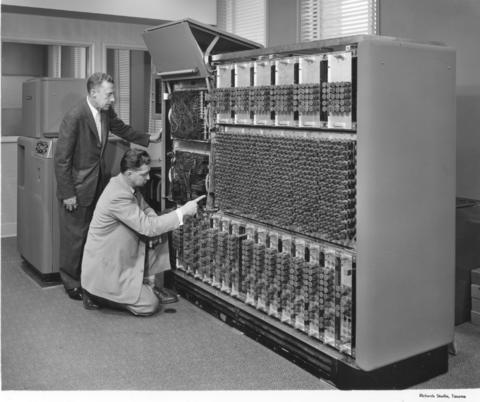Identity elements
Reference code
Name and location of repository
Level of description
Item
Title
A116568-4
Date(s)
- 1958-09-05 (Creation)
Extent
Name of creator
Content and structure elements
Scope and content
In September of 1958, Day Ward (kneeling) and an unidentified man examined the huge Univac system installed in the Pacific First Federal Savings & Loan building at 1102-04 Pacific Avenue in downtown Tacoma. Mr. Ward became vice president of the savings & loan association and worked for them for 27 years prior to his passing in 1980. "Univac" stood for Universal Automatic Computer. It was the first commercial computer built in the United States as well as the first computer designed for business use. The first sales in about 1951 were to governmental agencies, such as the Census Bureau, and private companies such as the A.C. Nielsen Co., and Prudential Insurance. General Electric Appliance Division purchased the first Univac using business applications to calculate payroll in 1954. By 1958 when this photo was taken, Univac had become slightly more common in the American workplace. Photograph ordered by Pacific First Federal Savings & Loan Assn. (Computer Science Club > csclub.@cs.ucdavis.edu; TNT 5-18-80, A-6-obit. of Mr. Ward) (Additional identification provided by a reader)
Computers; Banking--Tacoma; Pacific First Federal Savings & Loan Association (Tacoma); Ward, Day;

